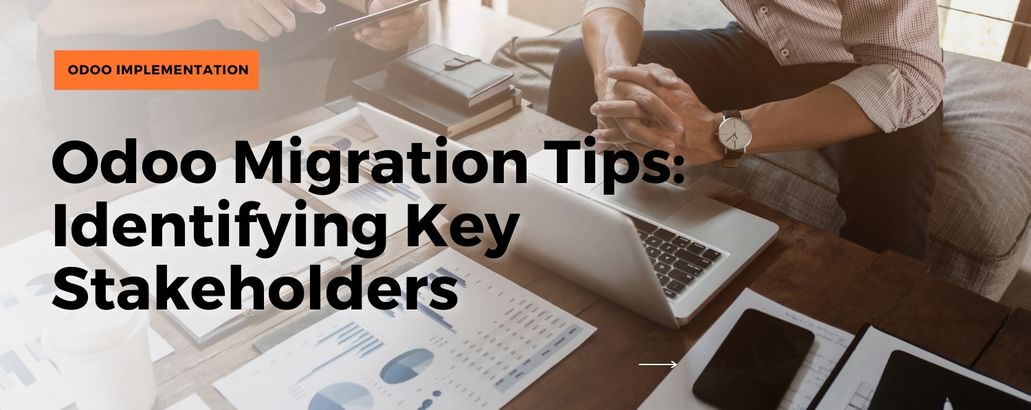
Odoo Migration Tips: Identifying Key Stakeholders
 Odoo is a powerful open-source ERP (Enterprise Resource Planning) and CRM (Customer Relationship Management) solution, and switching to Odoo can revolutionize the way that you do business.
Odoo is a powerful open-source ERP (Enterprise Resource Planning) and CRM (Customer Relationship Management) solution, and switching to Odoo can revolutionize the way that you do business.
At Blue Stingray, we’ve helped clients create custom Odoo implementations that match the way they work. We’ve built connectors for legacy and proprietary software, enabling businesses to leverage the power of Odoo without disrupting key systems. We’re advocates for open-source solutions — and we believe that Odoo is a powerful option for businesses of all sizes.
But before beginning an Odoo migration, it’s important to get stakeholders on board. That might prompt an obvious question: How do you know who counts as a key stakeholder for the project?
3 Principles for Selecting Odoo Stakeholders
Stakeholders are people who have a clear interest in the success of the project. That can include external stakeholders (for example, end users and business partners that connect with current systems), but for Odoo implementations, we’re generally looking for key stakeholders from internal teams.
There are three basic concepts to keep in mind:
- People who will use the new system should be involved in the planning process.
- Every department should have representation.
- Key stakeholders should be decision makers.
Below, we’ll explore these concepts in detail. To explore a few reasons to switch to Odoo, read: Switching to Odoo ERP: Advantages and Considerations.
1. Most key stakeholders should be users.
If a person currently works with legacy systems (ERPs, accounting software, or any other system that will be replaced or integrated with Odoo) they may be able to provide valuable input.
Users understand the issues that are driving the migration. They’ll be able to find candidate processes for automation, identify potential bottlenecks, and report on onboarding efforts over the course of the project.
Conversely, if a person doesn’t work with legacy systems — and they’re not going to use the new Odoo implementation regularly — they’re probably not great candidates. They may request features that already exist in current systems, or they might not be able to accurately measure the results of the migration.
2. Every department should have representation.
At larger organizations, some teams may get neglected during the first stage of the project, which can lead to serious issues later on.
Use an organizational chart to make sure that each department has a seat at the table, then make sure you understand how the switch to Odoo will impact each department. That also applies to departments that may not use Odoo directly; for example, if the accounting department will continue using their current accounting software, they might still need to move data to and from Odoo.
Be conscious of the relationships between divisions. Sales teams and engineers, for example, may have extremely different goals — but for the migration to be successful, you’ll need to address each department’s concerns while keeping the project on schedule.
3. Key stakeholders should be decision makers.
Decision makers have a strong interest in the results of the migration. They’re concerned with time, budget, and return on investment, and they’re capable of making nuanced decisions that weigh all of those factors.
This is important because experienced Odoo developers understand that some custom development requests aren’t practical. For the project to be successful, it’s important to balance the needs of each department while completing the migration within a reasonable timeframe — and it’s much easier to work with decision makers who are willing to explore different approaches that can accomplish key objectives.
Blue Stingray’s Odoo experts can help your business plan a successful migration.
Based in St. Louis, Blue Stingray is an Odoo partner with an established track record. From the initial consultation, we work with our clients to design ERP implementations that optimize automation — while limiting the unnecessary features that drag down productivity and extend project timelines.
That process starts with a careful identification of the key stakeholders and the goals of the project. To learn more about our process, read a few of our recent success stories:
- Odoo Success Story: Upgrading Odoo While Preserving Customizations
- Odoo Success Story: Mesa Logistics Group
- Odoo Success Story: Silkworm
Whether you’re migrating to Odoo, upgrading your current implementation, or exploring options for customization, we’re here to help. Contact Blue Stingray to get started.



